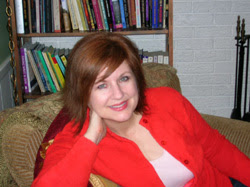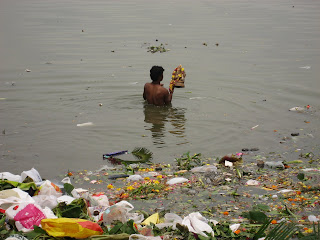I’m so pleased to welcome [American] National Book Award author
Kimberly Willis Holt for my very first interview on this blog.

Kimberly’s first novel,
My Louisiana Sky, was an ALA Notable Book and an ALA Top Ten Best Book for Young Adults. It also received a Boston Globe—Horn Book Honor Award. Her second novel,
When Zachary Beaver Came to Town, won the National Book Award. Her novel
Keeper of the Night was a "Best Book of the Year" selection from School Library Journal,
Kirkus and Bank Street College. Please, visit her website at
http://www.kimberlywillisholt.com/as it is totally charming, original, and fun..
Kimberly now lives in Texas, but she was a Third Culture Kid who moved a lot during her childhood. This interview is going to focus on her last novel
Piper Reed Navy Brat (illustrated by Christine Davenier, Henry Holt 2007) the theme of expatriation, and how Kimberly’s life as a
TCK has shaped her and continues to shape her writing.
look at Piper, isn't she irresistible?
 Kimberly, tell us about Piper Reed Navy Brat, and what prompted you to write this book.
Kimberly, tell us about Piper Reed Navy Brat, and what prompted you to write this book.
I’m a Navy brat. My dad was a Navy chief and served in the Navy for twenty-one years. I was born during a hurricane in Pensacola, Florida. After that we lived in a village outside of Paris, France. The other places I lived were Norfolk, Virginia, Alexandria, Louisiana,
Barrigada, Guam,
Bremerton, Washington, Forest Hill, Louisiana and New Orleans, Louisiana. We also visited Barcelona, Spain and Japan. We were gypsies.
For the last ten years, my editor has wanted me to explore that military childhood in my writing. I resisted because I thought it would be too autobiographical. But one day I heard the carefree voice of a nine-year-old girl. “I’
ve lived everywhere,” she said.
This may sound strange, but that's the way stories come to me.
The main character's voice speaks. Many times the first
statement they make becomes the first sentence in the book. I’
ve learned to listen to those voices and follow them. The day I heard Piper’s voice was the day I started writing the book that eventually became Piper Reed Navy Brat.
What, from your nomadic childhood, would you say had the most lasting impact on your adult life?I was a shy girl, but being forced to be the new girl so often made me adaptable to many situations. That can be a huge asset in life.
Do you feel it was a privileged life, or not? And why?I lived more places by the time I was ten than many adults only dream about going to. I’
ve learned about other cultures first hand. In France, I attended kindergarten and learned to speak and read the language. On Guam, I attended fiestas with my
Chamorro friends and learned to dance the
cha-
cha. During my high school years, my friends and I would sneak off to the French Quarter. Yep, I have had a privileged life. Not one with a lot of money, but a life filled with rich experiences.
If you had to live your childhood as a military kid again, what would you like to be different? What would you say was the best part about that life? And what was the worst, the hardest?If I had my military childhood to do over again, I’d try to look at each move as a new rich experience. And I’d stay in touch with the friends I made along the way. The best part about that life was learning about other cultures. The hardest part was leaving people I cared about behind. As a child I usually saw my grandparents once every couple of years. But I’
ve been fortunate to get to spend more time with them as an adult. All four of my grandparents were living in my mid-thirties and two are here today. So I made up for those years that I
didn’t get to see them as often as my cousins did.
I read somewhere that you have two sisters, like Piper Reed. Would you say their experience was the same as yours? Or do they have different feelings about their nomadic childhood?
When people would ask my middle sister, the inspiration of Piper, where she was from, she’d proudly answer, “I’m from nowhere.” I wanted to be from somewhere. But Alicia embraced that life. She was fearless and made friends easily.
My other sister is eleven years younger than me. She was six when my dad retired from the Navy. While I attended college in Louisiana, the rest of the family moved to Texas. My youngest sister has lived in the same zip code most of her life. Her children attend the schools she attended. In a way, she had the childhood I wanted.
Any advice for parents of TCKs that you feel might help smooth things out for their nomadic children?
Make every destination an adventure, but make it home, too. My mom turned every place we lived into a home. She made pillows for the couches, wallpapered the walls, and planted flowers in the garden. My parents allowed us to have pets on Guam even though we
weren’t allowed to take them when we left. We had cats, rabbits and turtles. My dad built a tree house for us. Because of my parents, I would forget that we were going to move.
At the same time we learned about the areas we lived in, usually on Sunday drives. I think one of the worst modern luxuries is a television in a vehicle. We looked out the window and learned about the world. That was our entertainment. That and playing silly car games or singing songs off-key.
My parents still cook foods that they learned to make while we lived in different destinations. My mom learned to make spaghetti from some Italian neighbors we had in Paris. We ate it every week, growing up. My parents sometimes cook
lumpia and
pancet that they learned to make on Guam. Fried rice is common in the states now, but there was a time that it
wasn’t. When we lived in my parents’ home town for a while, my mom made fried rice for a church potluck dinner. She called it Guam Fried Rice. Well at the next church potluck dinner, half a dozen versions of the dish spread out among the chicken and dumplings and pink-eyed purple hull peas. My mom had introduced Guam culture to Forest Hill, Louisiana. That’s what moving around a lot does—it makes the world smaller.
You seem to have a pretty settled life nowadays. Do you ever get itchy feet, the need to go abroad again?All the time! I love to travel and do. My daughter was raised in Texas, but she is aware of the world beyond this state. I think my military childhood is part of the reason why. My husband also traveled a lot as a boy. By the time he attended high school, he’d been to every state except Hawaii and Alaska. So he, also, knows the importance of travel.
When did you know you wanted to become a writer?I’
ve wanted to be a writer since I was twelve. I wrote a poem about a
Viet Nam soldier. My science teacher encouraged me to show it to the creative writing teacher. He liked it too, and told me he hoped I’d enroll in his class the next year. I started the day feeling like a misfit and I ended it feeling very special. That’s the power of teachers. I was also lucky enough to have an eighth grade English who taught us to journal. Those teachers made me feel like I could be a writer. I’
ve tried to find them in recent years, but I’
ve had no luck. So if you will allow me to give a shout out to Mr.
Kimmel, Mr.
Norseth and Ms. Pratt—Thank you!
Would you tell us a bit about how it all happened?
After college, I did a lot of other jobs—radio news director, advertising, marketing a water park, working as a terrible interior decorator. Still words were a part of my life. I
journaled and wrote long letters. Then on June 15, 1994, I made a commitment to be a writer. It’s been a wonderful journey.
So far, you've written novels set in Louisiana, Texas, on the island of Guam, and now, in Florida – all places that you know well. Do you find that you choose the setting of a book before the story comes to you? Would you tell us how that works for you?
Most of the time, the setting comes with the story. I hear the voice of the character. They tell me who they are and about their dilemma. As I begin, I usually know the ending. It’s the journey to the ending that I have to discover. That’s where the fun and the fear lives.
Setting is important to me. I try to make it a character in the book. I think setting shapes people. People are not the same everywhere. We may have universal feelings. We all experience joy and sadness, but place can give us distinct traits. And even that can effect what we view as joyful or sad. So it’s important to me as a writer to get the setting right. When I wrote Keeper of the Night, I returned to Guam to research. I
couldn’t rely on the fact that I’d lived there for two years.
Will we read more Piper Reed adventures?Yes. The second book, Piper Reed, The Great Gypsy comes out in August, followed by the third book in August 2009. And there may be more adventures. I hope so. In that way, I’m a bit like Piper Reed. I want to spread “Get off the bus!” around the world.
Thank you so much, Kimberly, for doing me the honor of stopping here to answer these few questions.Thank you,
Katia. It’s been my pleasure.
Well, that's it. Annette Gulati, you are the lucky winner who'll get a signed copy of Piper Reed Navy Brat. Please, visit Kimberly on her website and send her your mailing address mentioning how you won, so she can send it to you.


 Kimberly’s first novel, My Louisiana Sky, was an ALA Notable Book and an ALA Top Ten Best Book for Young Adults. It also received a Boston Globe—Horn Book Honor Award. Her second novel, When Zachary Beaver Came to Town, won the National Book Award. Her novel Keeper of the Night was a "Best Book of the Year" selection from School Library Journal, Kirkus and Bank Street College. Please, visit her website at http://www.kimberlywillisholt.com/as it is totally charming, original, and fun..
Kimberly’s first novel, My Louisiana Sky, was an ALA Notable Book and an ALA Top Ten Best Book for Young Adults. It also received a Boston Globe—Horn Book Honor Award. Her second novel, When Zachary Beaver Came to Town, won the National Book Award. Her novel Keeper of the Night was a "Best Book of the Year" selection from School Library Journal, Kirkus and Bank Street College. Please, visit her website at http://www.kimberlywillisholt.com/as it is totally charming, original, and fun..


